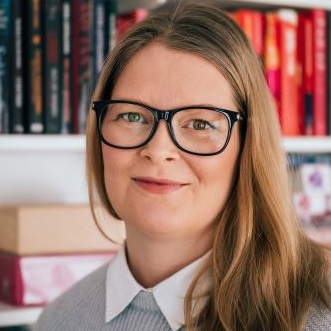Impact in Horizon Europe – what’s new?
In the recent years research impact has been gaining in importance. For example in FP7, the European funding programme for research ( 2007 – 2013), it was enough to show scientific excellence to have a funded project, but in the following Horizon 2020 funding programme (2014-2020) projects were expected to deliver not only scientific excellence but also close to market solutions to the industry and/or solve societal problems. Each H2020 funding call listed numerous expected impacts the projects were supposed to deliver within their lifetime. This despite the fact that it has long been recognised that impact is a change that occurs within a long period of time, alas most likely not within the usual duration of an average EU-project, which is three years. Towards the end of H2020 this issue was broadly discussed and even though the new Horizon Europe is said to be not a revolution but an evolution, certain changes also in terms of impact have taken place. Let’s have a look at how impact manifests itself in the brand-new Horizon Europe programme launched this February.
The Horizon Europe funding programme is influenced by the overall priorities of the EU which are the Green Deal, a digital future, an economy that works for people and promoting and strengthening European democracy. There are four Key Strategic Orientations (KSO) that respond to these priorities:
A - Promoting an open strategic autonomy by leading the development of key digital, enabling and emerging technologies, sectors and value chains;
B - Restoring Europe’s ecosystems and biodiversity, and managing sustainably natural resources;
C - Making Europe the first digitally enabled circular, climate-neutral and sustainable economy;
D - Creating a more resilient, inclusive and democratic European society.
The KSO’s are objectives within EU’s policy priorities where research and innovation (R&I) is expected to make a difference. Each KSO is further defined by Impact Areas, a group of expected impacts, that highlight the most important transformations enabled by R&I. The expected impacts are more specific and listed under destinations. Destinations are socio-economic challenges that are to be addressed with various R&I activities. Each destination consists of one or more topics (the actual funding calls), which describe the expected outcomes that R&I activities should deliver. The expected outcomes are the desired effects of the project in the medium term such as the uptake, diffusion, use and/or deployment of the project’s results by various relevant target groups. In other words, the destinations and topics of the new work programme put forward the impacts the Commission wants to achieve and the individual projects support this by delivering the expected outcomes.
The Impact section we know from H2020 proposals will in the future be divided in two parts: 1) Project’s pathways towards impact and 2) Measures to maximise impact - Dissemination, exploitation and communication. A draft Plan for dissemination and exploitation including communication activities remains a part of the proposal and if the project is funded becomes a mandatory project deliverable by month six of the project. Under 1) Project’s pathways towards impact a narrative describing the Key Impact Pathways in the project is expected. Impact pathway is a process that starts with resources used in research. With the resources certain(research) activities are performed and these lead to various outputs such as publications, test results, new algorithms etc. When the outputs are taken into use by others, they create short term changes, outcomes, for example the uptake of the developed algorithm. These outcomes, when further tried and tested, can lead to impact that in the long run can contribute to solving our society’s grand challenges The mandatory summary canvas presents the key elements of the project’s impact pathways and measures to maximise the impact:
1) Specific needs that triggered the project.
2) Expected results by the end of the project.
3) The dissemination, exploitation and communications measures applied to the results.
4) Target groups – who will use or uptake the results, who benefits from them?
5) Outcomes - what changes are being expected after successful dissemination and exploitation of project results to the target group(s)? and finally,
6) Impact - what are the expected wider scientific, economic and societal effects of the project contributing to the expected impacts outlined in the respective destination in the work programme?
A remarkable novelty in the HEU is the inclusion of social sciences and humanities (SSH) in each cluster, missions and partnerships. Our grand challenges, especially those related to green and digital transitions, require a holistic approach. There are topics that are specifically “flagged” for SSH participation in each cluster in addition to Cluster 2 (Culture, Creativity and Inclusive Society), which is dedicated to SSH relevant topics. To ensure that solutions and products are socially acceptable, applicable, and cost-effective, R& I activities must be planned and executed with regard to their implications for citizens and society and this requires the integration of SSH. SSH can offer for example understanding of human behaviour, cultural values and historical dimensions, trends, demographics, ethics, business models, governance, legal and institutional frameworks, decision-making processes etc. In flagged topics SSH should be an integral part of each section of your proposal starting from the proposal planning. SSH partners can also help you to reach out to citizens, an important aspect of the new HEU which aims to ensure cooperation between universities, scientific communities and industry, and citizens and their representatives.
A good thing to keep in mind is that while researchers should be aware of the impact potential, they might not be the best to make it happen. This is why building the right kind of consortium covering the whole value chain or representing all relevant stakeholders is crucial.
For more information on IMPACT check our Impact Helper
Further reading: Presentation of the new Horizon Europe funding programme
Kirsi Ojutkangas (M.A.) is a research funding specialist at University of Oulu where she is supporting researchers to acquire external funding especially from the Horizon Europe funding programme. Her interests lie in research impact and sustainability and she has published on impact in SSH, developed an online impact guide (https://www.oulu.fi/
Autor/ica bloga:

